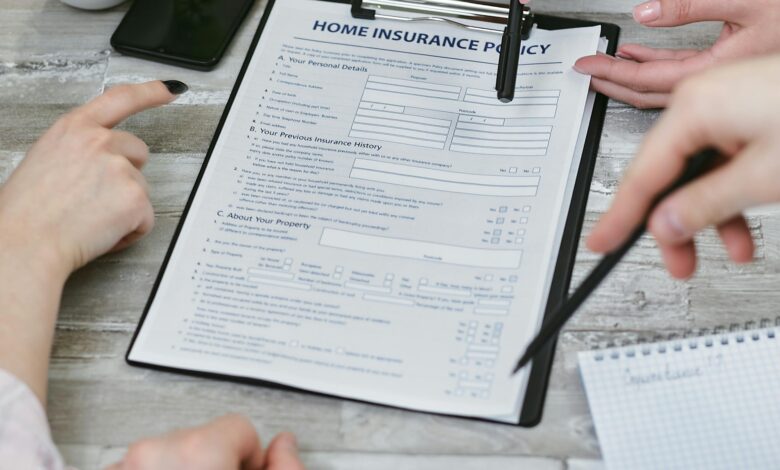How to Insure Your Home Against Flooding in Canada: A Comprehensive Guide

Flooding is one of the most common and costly natural disasters in Canada, affecting thousands of homeowners each year. From spring snowmelt to heavy rainfall and overflowing rivers, flooding poses a significant risk to property and financial stability. Unfortunately, standard home insurance policies in Canada typically do not cover flood damage, leaving many homeowners vulnerable to unexpected expenses.
If you’re looking to protect your home against flooding, it’s essential to understand the risks, explore available insurance options, and take proactive measures to mitigate potential damage. This guide will walk you through everything you need to know about insuring your home against flooding in Canada.
Understanding Flood Risks in Canada
Before diving into insurance options, it’s important to recognize the types of floods that can occur and their causes:
- Riverine Flooding
Occurs when rivers overflow due to excessive rain or melting snow, impacting nearby properties. - Urban Flooding
Happens in cities when drainage systems become overwhelmed during intense storms, leading to water pooling in streets and basements. - Storm Surges
Coastal areas are at risk of storm surges caused by hurricanes or severe weather events pushing seawater onto land. - Groundwater Seepage
Water infiltrates basements through cracks in foundations, often exacerbated by saturated soil after prolonged rainfall. - Overland Flooding
Refers to water flowing over dry land from nearby bodies of water, such as lakes or rivers, entering homes through doors, windows, or other openings.
Understanding these risks helps you assess your property’s vulnerability and choose appropriate coverage.
Why Standard Home Insurance Doesn’t Cover Floods
In Canada, traditional home insurance policies exclude coverage for overland flooding and groundwater seepage. These exclusions exist because:
- Floods are considered high-risk events with the potential for widespread damage.
- Insurers historically lacked tools to accurately assess and price flood risks.
However, recent advancements in technology and increased awareness have led some insurers to offer optional flood insurance. It’s crucial to review your policy carefully and identify any gaps in coverage.
Steps to Insure Your Home Against Flooding
Protecting your home against flooding requires a combination of insurance solutions and preventive measures. Follow these steps to ensure comprehensive protection:
1. Review Your Current Home Insurance Policy
Start by examining your existing policy to determine what is—and isn’t—covered. Key questions to ask include:
- Does my policy cover sewer backup?
- Are there any endorsements or riders I can add for additional flood protection?
- What specific exclusions apply to water-related damages?
Many policies include limited coverage for sewer backup , which occurs when water enters your home through drains due to blocked or overloaded sewer systems. While this isn’t the same as overland flooding, it’s still an important safeguard.
2. Explore Overland Flood Insurance
Overland flood insurance is a relatively new offering in Canada, introduced in 2015 following devastating floods in Alberta and Toronto. This type of coverage protects against damage caused by water entering your home from external sources like rivers, lakes, or heavy rainfall.
How to Obtain Overland Flood Insurance
- Contact Your Insurer : Not all providers offer overland flood insurance, so inquire directly with your current insurer or shop around.
- Check Eligibility : Coverage availability depends on your location. Homes in high-risk flood zones may face higher premiums or be denied coverage altogether.
- Understand Limits and Deductibles : Policies vary in terms of payout limits and deductible amounts. Ensure the coverage aligns with your property’s value and potential repair costs.
3. Add Sewer Backup Coverage
Even if you secure overland flood insurance, it’s wise to add sewer backup coverage to your policy. This endorsement typically costs between $50 and $200 annually but provides valuable protection against water entering your home through drains or sewers.
4. Consider Government Programs
The federal government has partnered with private insurers to expand access to flood insurance through initiatives like the Resilient Homes Program . Additionally, provinces may offer resources or subsidies for flood mitigation projects, reducing your overall risk and potentially lowering insurance premiums.
5. Mitigate Flood Risks Around Your Property
Insurance is just one piece of the puzzle. Taking proactive steps to reduce flood risks can make your home safer and more insurable. Here are some practical tips:
a. Install Proper Drainage Systems
- Ensure downspouts direct water away from your foundation.
- Install a sump pump with a battery backup to prevent basement flooding.
b. Seal Foundation Cracks
Use waterproof sealants to patch cracks in your basement walls and floor, preventing groundwater seepage.
c. Elevate Critical Systems
Raise electrical panels, furnaces, and water heaters above potential flood levels to minimize damage.
d. Maintain Gutters and Drains
Regularly clean gutters and ensure drainage ditches are clear of debris to improve water flow.
e. Landscape Strategically
Grade your yard so that water flows away from your home rather than toward it.
6. Assess Your Location’s Flood Risk
Flood risk varies significantly depending on where you live. Use online tools like the Flood Map Portal provided by Natural Resources Canada to evaluate your area’s susceptibility to flooding. High-risk locations may require specialized insurance products or additional precautions.
Cost of Flood Insurance in Canada
The cost of flood insurance depends on several factors, including:
- Location : Properties in high-risk flood zones will pay higher premiums.
- Coverage Amount : Higher limits result in increased costs.
- Deductible : Opting for a higher deductible lowers your premium but means paying more out-of-pocket in the event of a claim.
- Property Value : More expensive homes generally require pricier policies.
On average, overland flood insurance can range from $200 to $1,000 annually, while sewer backup coverage tends to be more affordable. Always request quotes from multiple insurers to find competitive rates.
What to Do If You Can’t Afford Flood Insurance
For homeowners who cannot afford traditional flood insurance, consider these alternatives:
- Layered Protection
Combine sewer backup coverage with basic overland flood insurance for partial protection at a lower cost. - Emergency Savings Fund
Set aside money specifically for disaster recovery. While not a substitute for insurance, it provides a financial buffer in case of emergencies. - Community Resources
Some municipalities offer grants or low-interest loans for flood mitigation projects, helping reduce risks and associated costs. - Government Assistance
In the aftermath of a declared disaster, the federal government may provide financial aid to affected homeowners. However, relying solely on this support is risky, as payouts are often delayed and insufficient.
Tips for Filing a Flood Insurance Claim
If your home suffers flood damage, follow these steps to file a successful claim:
- Document Everything : Take photos and videos of the damage before beginning cleanup efforts.
- Notify Your Insurer Immediately : Report the incident promptly to avoid delays in processing.
- Keep Records : Save receipts for temporary repairs, accommodations, and other related expenses.
- Work with Approved Contractors : Use contractors recommended by your insurer to ensure quality work and proper reimbursement.



